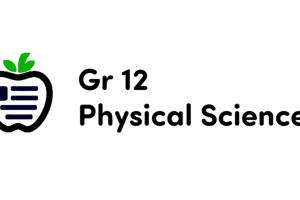Podcast
Questions and Answers
What happens to gravity when you let go of a book?
What happens to gravity when you let go of a book?
- Gravity becomes a repulsive force
- Gravity becomes a balanced force
- Gravity becomes an unbalanced force (correct)
- Gravity disappears
What are some significant effects of long-term weightlessness on the human body mentioned in the text?
What are some significant effects of long-term weightlessness on the human body mentioned in the text?
- Enhanced immune system
- Improved cardiovascular system functions
- Increased muscle mass
- Decreased production of red blood cells (correct)
In the human body, what happens when objects are stationary according to the text?
In the human body, what happens when objects are stationary according to the text?
- The body is accelerating
- The body experiences dynamic force
- The body is in a state of equilibrium (correct)
- The body loses mass
How do most skeletal muscles operate according to the text?
How do most skeletal muscles operate according to the text?
Which force is responsible for holding the particles in the nucleus of an atom together?
Which force is responsible for holding the particles in the nucleus of an atom together?
What is the medical effect of gravitational forces mentioned in the text?
What is the medical effect of gravitational forces mentioned in the text?
Which force is responsible for forces resulting from electric charge?
Which force is responsible for forces resulting from electric charge?
What may happen to a person's bone mineral if they become weightless, such as in an orbiting satellite?
What may happen to a person's bone mineral if they become weightless, such as in an orbiting satellite?
According to Newton's 1st Law of Motion, what happens to an object in motion?
According to Newton's 1st Law of Motion, what happens to an object in motion?
Which of the following forces acts through direct contact between two objects?
Which of the following forces acts through direct contact between two objects?
How does Newton's 2nd Law relate force to mass and acceleration?
How does Newton's 2nd Law relate force to mass and acceleration?
What is the main idea behind Newton's 3rd Law of Motion?
What is the main idea behind Newton's 3rd Law of Motion?
What is the main function of the muscular forces described in the text?
What is the main function of the muscular forces described in the text?
Which force is responsible for the formation of varicose veins in the legs as mentioned in the text?
Which force is responsible for the formation of varicose veins in the legs as mentioned in the text?
What is the medical impact on bone mineral when a person undergoes long-term bed rest according to the text?
What is the medical impact on bone mineral when a person undergoes long-term bed rest according to the text?
Which force gives materials their strength, their ability to bend, squeeze, stretch, or shatter?
Which force gives materials their strength, their ability to bend, squeeze, stretch, or shatter?
What is the impact on bone mineral when a person becomes weightless, such as in an orbiting satellite?
What is the impact on bone mineral when a person becomes weightless, such as in an orbiting satellite?
Which force holds the particles in the nucleus of an atom together?
Which force holds the particles in the nucleus of an atom together?
What causes the radioactive decay of nuclei according to the text?
What causes the radioactive decay of nuclei according to the text?
Which force is very large compared to gravity and is responsible for forces resulting from electric charge?
Which force is very large compared to gravity and is responsible for forces resulting from electric charge?
In a second-class lever, where is the point of resistance located?
In a second-class lever, where is the point of resistance located?
What is the role of muscle contraction in a bone-muscle lever system?
What is the role of muscle contraction in a bone-muscle lever system?
Which type of lever has the pivot located between the effort and the load?
Which type of lever has the pivot located between the effort and the load?
What is a mnemonic to remember levers based on their types?
What is a mnemonic to remember levers based on their types?
What does mechanical advantage refer to in lever systems designed for force?
What does mechanical advantage refer to in lever systems designed for force?
How is a second-class lever utilized in the human body?
How is a second-class lever utilized in the human body?
What determines the mechanical advantage of levers in general?
What determines the mechanical advantage of levers in general?
Which lever type allows a given effort to move a heavier load than it otherwise could?
Which lever type allows a given effort to move a heavier load than it otherwise could?
What is the force developed when a person's head, with a mass of 4 Kg, stops in 0.5 cm in about 0.01 sec after hitting a steel beam at 1 m/sec?
What is the force developed when a person's head, with a mass of 4 Kg, stops in 0.5 cm in about 0.01 sec after hitting a steel beam at 1 m/sec?
What is the acceleration experienced by the person's head when it stops in 0.5 cm in about 0.01 sec after hitting a steel beam at 1 m/sec?
What is the acceleration experienced by the person's head when it stops in 0.5 cm in about 0.01 sec after hitting a steel beam at 1 m/sec?
Which effect mentioned in the text is related to changes in internal hydrostatic pressure due to acceleration?
Which effect mentioned in the text is related to changes in internal hydrostatic pressure due to acceleration?
What is the resonant frequency of an organ directly dependent on according to the text?
What is the resonant frequency of an organ directly dependent on according to the text?
In order for the spine to be in equilibrium when lifting a weight with a horizontal back, what must happen?
In order for the spine to be in equilibrium when lifting a weight with a horizontal back, what must happen?
Why does lifting a weight incorrectly, with the back horizontal, result in so many back injuries?
Why does lifting a weight incorrectly, with the back horizontal, result in so many back injuries?
When lifting a weight against your body, why does it exert a smaller torque compared to lifting it with the back horizontal?
When lifting a weight against your body, why does it exert a smaller torque compared to lifting it with the back horizontal?
How does the torque exerted by a 10 kg weight lifted against your body compare to the same weight lifted with the back horizontal?
How does the torque exerted by a 10 kg weight lifted against your body compare to the same weight lifted with the back horizontal?
What happens to the torque when you hold the weight closer to your body while lifting it?
What happens to the torque when you hold the weight closer to your body while lifting it?
Why do muscles need to exert a large force when balancing torques due to weights on the spine?
Why do muscles need to exert a large force when balancing torques due to weights on the spine?
What can be inferred about weightlifting with knees bent and back straight based on the text?
What can be inferred about weightlifting with knees bent and back straight based on the text?
How does holding a weight closer to your body affect the torque it exerts according to the text?
How does holding a weight closer to your body affect the torque it exerts according to the text?
Flashcards are hidden until you start studying
Study Notes
- A force is a push or pull acting on an object that changes its motion.
- Types of forces: contact forces (applied forces, friction) and field forces (gravity, electromagnetic force).
- Contact forces require physical contact between objects.
- Field forces act through empty space.
- Newton's Laws of Motion:
- 1st Law (Law of Inertia): an object will stay at rest or in motion at constant velocity unless acted upon by an unbalanced force.
- 2nd Law: force equals mass times acceleration.
- 3rd Law: for every action, there is an equal and opposite reaction.
- Four fundamental forces in nature:
- Gravitational Force: an attractive force that exists between all objects; weakest force.
- Electromagnetic Force: results from electric charge; very large compared to gravity.
- Strong Nuclear Force: holds particles in the nucleus of an atom; strongest force but only acts over a short distance.
- Weak Force: a form of electromagnetic force involved in radioactive decay.
- Forces in and on the body:
- Muscular forces cause blood circulation and lung function.
- Molecular forces exist in bone and calcium atoms.
- Electric forces exist in the body.
- Gravitational forces affect medical conditions like varicose veins and bone loss.
- Effects of gravity on the body and medical conditions.
- Lever Systems:
- Levers consist of a beam or rigid rod pivoted at a fixed hinge or fulcrum.
- Levers divide into three types based on the location of the fulcrum, load, and effort.
- In the human body, bones act as levers, joints as fulcrums, and muscle contractions provide effort.
- Mechanical advantage and mechanical disadvantage in levers.
- Mechanical advantage formula: MAlever = Effort (force) arm / Resistance (load) arm.
- Example: lifting a weight with the back horizontal exerts a larger torque and requires greater force from muscles compared to lifting the same weight while keeping back straight.
Studying That Suits You
Use AI to generate personalized quizzes and flashcards to suit your learning preferences.




